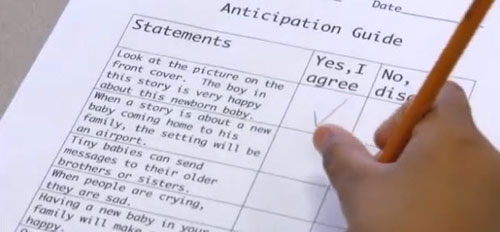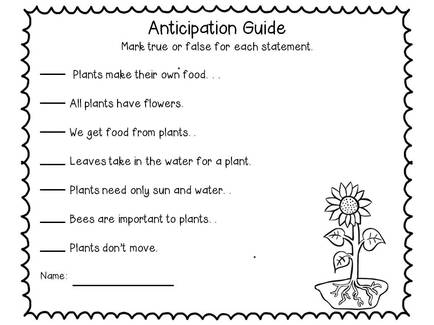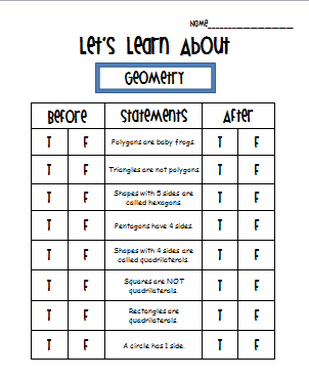What is an Anticipation Guide?
Visual Representations
|
Above is an anticipation guide used for a science lesson. Students answer true/ false questions about various topics dealing with plants. With this guide, students are able to get a preview of what they will be learning about.
|
In the image to the left a student is completing an anticipation guide by answering "yes, I agree" or "no, I disagree". The statements on the guide have the students looking through the text he or she is about to read. This student is anticipating what he or she is about to read.
Here is an anticipation guide that is used for math. Students answer true and false statements before they learn about geometry. After the geometry unit, students answer the same statements. By doing this anticipation guide, students can see what they need to learn throughout the unit and it activates their prior knowledge.
|
Content Area Examples



